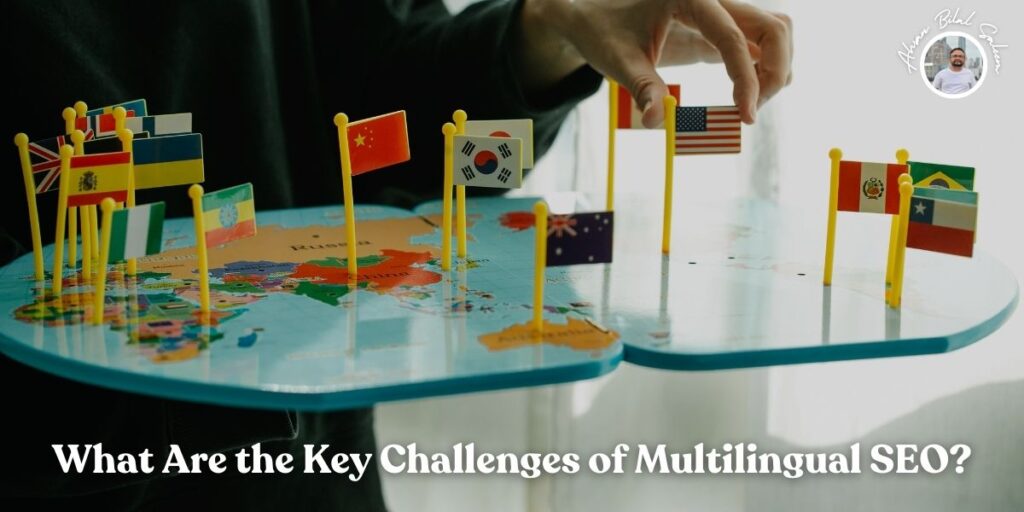In today’s globalized digital landscape, catering to a multilingual audience has become a necessity for businesses seeking to expand their reach. Multilingual SEO involves optimizing websites for different languages and regions, ensuring that content is discoverable and relevant to diverse audiences. However, this process comes with unique challenges that demand careful planning and execution. Below, we explore the key challenges of multilingual SEO and how to overcome them.
Language vs. Locale Targeting
One of the primary challenges in multilingual SEO is distinguishing between language and locale targeting. For instance, Spanish is spoken in numerous countries, but the vocabulary, slang, and cultural nuances vary significantly between Spain, Mexico, and Argentina. Just interpreting your substance isn’t sufficient.
Solution: Implement hreflang tags correctly to signal to search engines which version of your content is intended for specific languages and regions. This helps avoid duplicate content issues and ensures the right audience sees the appropriate version of your site.
Accurate Translation vs. Localization
Direct translations often miss cultural nuances, leading to content that feels awkward or irrelevant. Poorly localized content can harm user experience and brand perception.
Solution: Invest in professional localization services instead of relying solely on automated translation tools. A localized approach adapts your content to the cultural preferences and idiomatic expressions of the target audience.
Keyword Research for Different Languages
Keywords that perform well in one language may not have the same search volume or relevance in another. Directly translating keywords can result in targeting terms that users in the target region do not commonly search for.
Solution: Conduct keyword research specific to each language and region. Use tools like Google Keyword Planner or SEMrush to identify high-performing keywords that resonate with your audience in their native language.
URL Structure for Multilingual Websites
Picking the right URL structure is basic for SEO. Options include subdomains (e.g., es.example.com), subdirectories (e.g., example.com/es/), or country-specific domains (e.g., example.es). Each approach has its advantages and drawbacks.
Solution: Select a URL structure based on your goals, resources, and target markets. Subdirectories are often easier to manage, while country-specific domains can boost local rankings but require more investment.
Content Duplication and Duplicate Content Penalties
Publishing content in multiple languages can lead to duplicate content issues, confusing search engines and diluting your rankings.
Solution: Use hreflang tags to avoid penalties and specify language-region combinations. Additionally, ensure that translated content is unique and valuable to users.
Technical SEO Challenges
Multilingual websites often face technical issues such as incorrect hreflang implementation, broken links on language-specific pages, and slow loading times for international audiences.
Solution: Regularly audit your website for technical SEO errors. Use tools like Screaming Frog or Ahrefs to identify and fix issues. Optimize your website for speed by leveraging Content Delivery Networks (CDNs) and compressing resources.
Managing Backlinks Across Multiple Languages
Building backlinks for multilingual content can be tricky. Backlinks in one language may not carry as much weight for pages in another language, affecting overall domain authority.
Solution: Focus on acquiring region-specific backlinks for each language version of your site. Collaborate with local influencers or guest post on region-specific platforms to build authority in target markets.
Cultural Sensitivity and Content Relevance
Ignoring cultural differences can alienate users and damage your brand’s reputation. For instance, certain colors, symbols, or phrases may carry different meanings in different cultures.
Solution: Research cultural norms and preferences in your target region. Customize your visuals, tone, and messaging to align with local sensitivities.
Monitoring and Analytics Challenges
Tracking the performance of multilingual websites is more complex. You need to monitor traffic, conversions, and rankings across multiple languages and regions.
Solution: Use tools like Google Analytics and Google Search Console to segment data by language and region. Set up separate profiles for different site versions if needed to gain deeper insights.
Budget and Resource Allocation
Multilingual SEO often requires significant investment in translation, localization, technical adjustments, and ongoing monitoring. Without legitimate preparation, expenses can rapidly winding crazy.
Solution: Prioritize target markets and languages based on ROI potential. Start small, measure results, and scale gradually to avoid overspending.
Final Thoughts
Multilingual SEO is a powerful strategy for reaching global audiences, but it comes with its share of challenges. By addressing these hurdles with thoughtful planning, robust tools, and a commitment to quality, businesses can create a strong international presence and drive significant growth.
